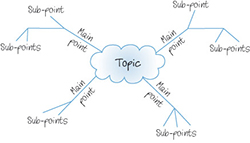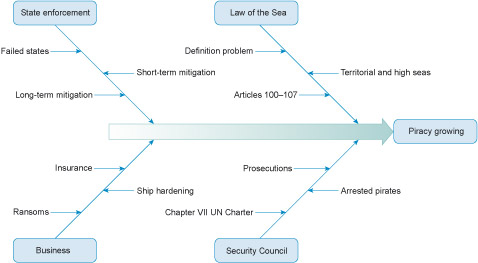2.4 Mind maps
Mind maps (sometimes called spray diagrams) are good for remembering things, taking notes, saving time and concentrating. They are also great for generating ideas. Figure 3 shows an example of a mind map.
A cause and effect diagram is a way of analysing the possible causes of a problem so that they can be examined separately to seek a solution. It may also be referred to as a 'fishbone' or 'Ishikawa' diagram. The 'effect' is the problem for which a solution is sought, such as the growth of international piracy. It is written in a box at the end of a long arrow, as shown in Figure 4:

The 'bones' of the fish are then added as shown in Figure 5.
Each 'bone' represents a possible cause of the problem. Further bones can be added until all the possible causes have been identified. The bones themselves can be broken down to aid understanding if required.
The fishbone technique keeps the ideas separate so that they can be considered more easily but also shows how they may be interconnected.


